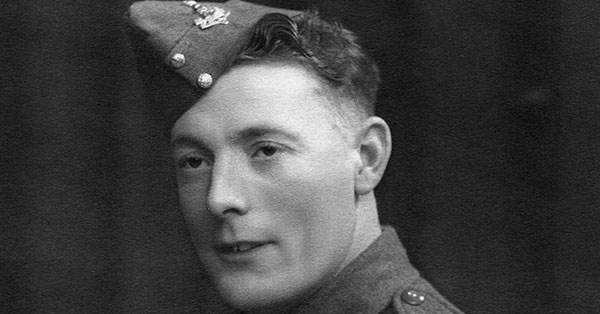Sergeant Stanley Hollis gained fame as the ‘man the Nazis could not kill.’ He avoided death on multiple occasions during World War II, most notably during the D-Day landing at Normandy on June 6, 1944. After watching as the soldier beside him was blown to pieces by an exploding mine just minutes after the two men enjoyed a rare moment of levity, Hollis sprang into action and risked his life on two occasions to save his fellow troops on the French beach.
Early Life
Stanley Hollis was born in Middlesbrough, England on September 21, 1912. He left school in 1926 when his parents moved to Robin Hood’s Bay, and worked in a fish and chip shop owned by his father. Three years later, he took his first step towards a military career by becoming an apprentice to a shipping company in Whitby with a view to being a Navigation Officer.

His fledgling merchant navy career ended the following year when he was struck down by blackwater fever. For almost the next decade, Hollis lived a normal life. He worked as a lorry driver and lived in Middleborough with his wife, Alice. However, everything changed in 1939 when World War II broke out, and Hollis was keen to get involved and serve his country.
Hollis’ Early World War II Exploits
Normandy was not Hollis’ first brush with death as he fought bravely during the early years of the war. He enlisted in the Territorial Army in 1939 as part of the British Army’s 4th Battalion before the beginning of the war. Once the conflict started, Hollis was mobilized and sent to the 6th Battalion. He was part of the British Expeditionary Force in 1940 and distinguished himself in combat. During the evacuation from Dunkirk, Hollis was promoted to Sergeant.
His next mission was as part of the British Eighth Army in its North African campaign. Another promotion awaited Hollis before the invasion of Sicily in 1943; this time to the rank of Company Sergeant Major. He was later wounded at the Battle of Primosole Bridge. During World War II, Hollis was known as a man one didn’t mess with. As well as being 6ft 2 inches tall and extremely strong, he also possessed a fiery temper. In fact, he was reprimanded on numerous occasions but always regained the trust of other soldiers and officers due to his obvious leadership qualities.

Hollis’ Heroics on D-Day
On June 6, 1944, up to 150,000 Allied troops stormed the beaches of Normandy in a successful mission that proved pivotal in the war effort. Approximately 12,000 of these men died that day, and it is something of a miracle that Hollis was not one of them. There was an amusing moment for the soldiers on the landing craft as many of them were given a condom.
Hollis was the first to make his voice heard as he made the men laugh with a rude joke. It helped ease the anxiety of many young soldiers who were rightly nervous at the fate that awaited them. Incidentally, the condom was used as a cover for the rifle muzzles when the men were in the water.
The troops waded through the water, avoided enemy mortar fire and navigated their way past a minefield before finally crawling uphill towards their objective. The goal was to deal with a battery of German big guns to help relieve the under fire troops coming ashore. As soon as the Allies made their way towards the target, the Germans opened fire with machine guns. The enemy was hidden behind a pill box on the Allied flank, and Hollis knew he had to do something immediately or his company was in danger of getting wiped out.
Hollis suddenly jumped to his feet and began spraying bullets from his sten gun in the direction of the enemy. He sprinted across the dunes and incredibly dodged the array of bullets fired at him. When Hollis reached the pill box, he shoved the barrel of his weapon through a slit and opened fire. Next, he tossed a grenade inside, and when it exploded, he smashed open the door and found two enemy soldiers dead with the rest too wounded or dazed to stop him.
Hollis quickly turned his attention to another pill box about 100 yards away. Once again, he charged towards the enemy and the shocked German soldiers surrendered to avoid the same fate as their comrades. Hollis captured 20 Nazi troops single-handedly and saved the lives of his company. According to Mike Morgan, Hollis’ biographer, the Company sergeant major’s deeds changed the course of the battle. He had not intervened; the Germans would have stopped the first wave of invaders and possibly threatened the success of the mission. These actions alone were worthy of a VC, but Hollis was not done yet.

